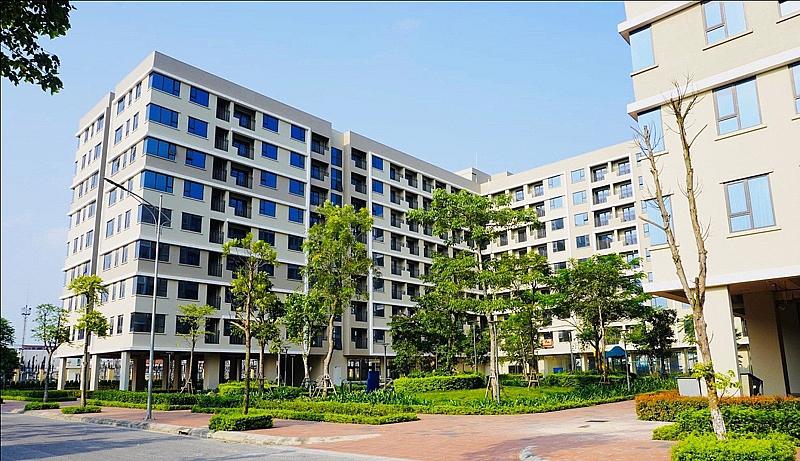According to statistics from the Vietnam Association of Realtors (VARS), the demand for social housing in the period 2021 – 2025 is 1.24 million units.
In order to implement the determination to build 100,000 social housing units by the end of 2025, the Ministry of Construction requested local People’s Committees to report on some contents of the implementation of the social housing development plan in 2025.
Specifically: the number of projects, the scale of the number of apartments completed this year; the number of projects, the scale of the number of apartments to be started; the number of projects, the scale of the number of apartments to be approved for investment in 2025. The 2024 summary report data recently announced by the Ministry of Construction shows that from 2021 to now, nationwide, 644 social housing projects have been implemented with a scale of more than 580,000 apartments. Of which, only 96 projects have been completed, with a scale of more than 57,000 apartments.
According to statistics from the Vietnam Association of Realtors (VARS), the demand for social housing in the 2021-2025 period is 1.24 million units and the plan set by the Ministry of Construction is 428,000 units. Although the Government, localities and businesses have actively implemented, the results have not been as expected. In 2024, the whole country has not achieved the target assigned by the Prime Minister of completing 130,000 social housing units.
In addition, the disbursement rate of the VND120,000 billion credit package is also low due to the fact that the actual supply is still scarce, the approval of people’s access conditions is still stuck, high interest rates, short loan terms… In particular, the number of social housing projects implemented and opened for sale in urban areas is very modest. Most of the social housing projects are located in the suburbs, far from the center, not convenient for workers working in urban areas…
Many investors share that they want to build social housing, both to contribute to the community and to take advantage of preferential policies and meet the huge and stable housing demand of this segment. However, in places with the highest demand and purchasing power, businesses find it difficult to do so because of complicated procedures and legal processes. Selling prices and profits are controlled too low while development costs (land, construction, interest rates, etc.) are constantly increasing.
Currently, land funds in the central area are increasingly scarce and expensive. However, if developing land funds for social housing located in the suburbs or areas with underdeveloped infrastructure, businesses will have difficulty selling because it is difficult to attract buyers.
















